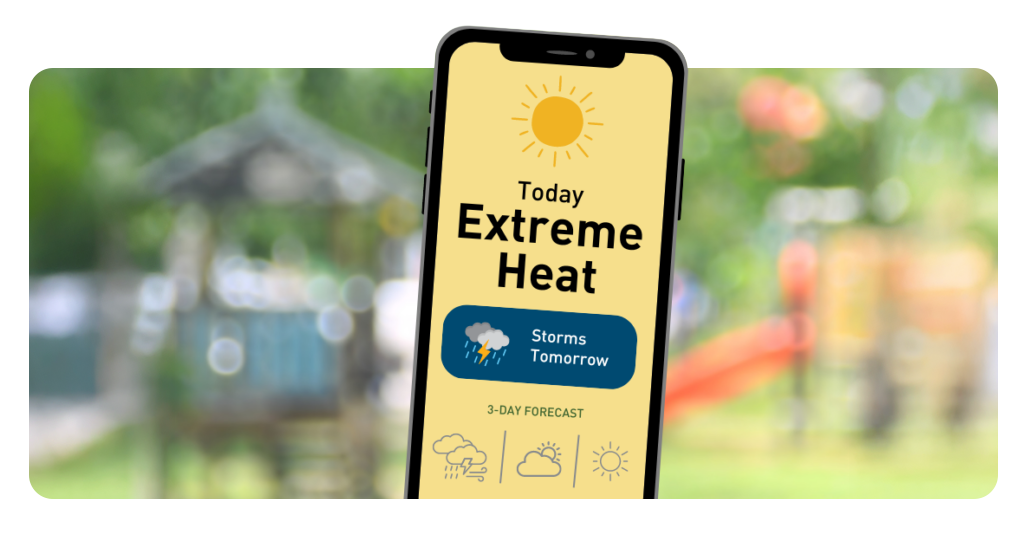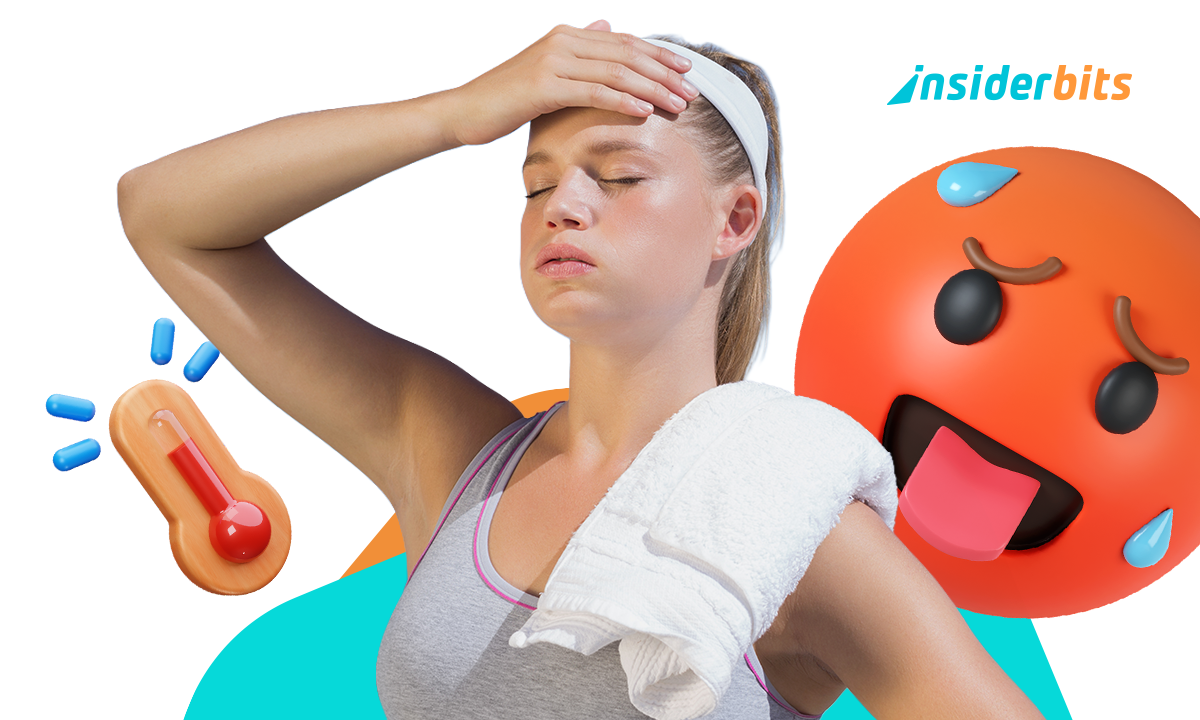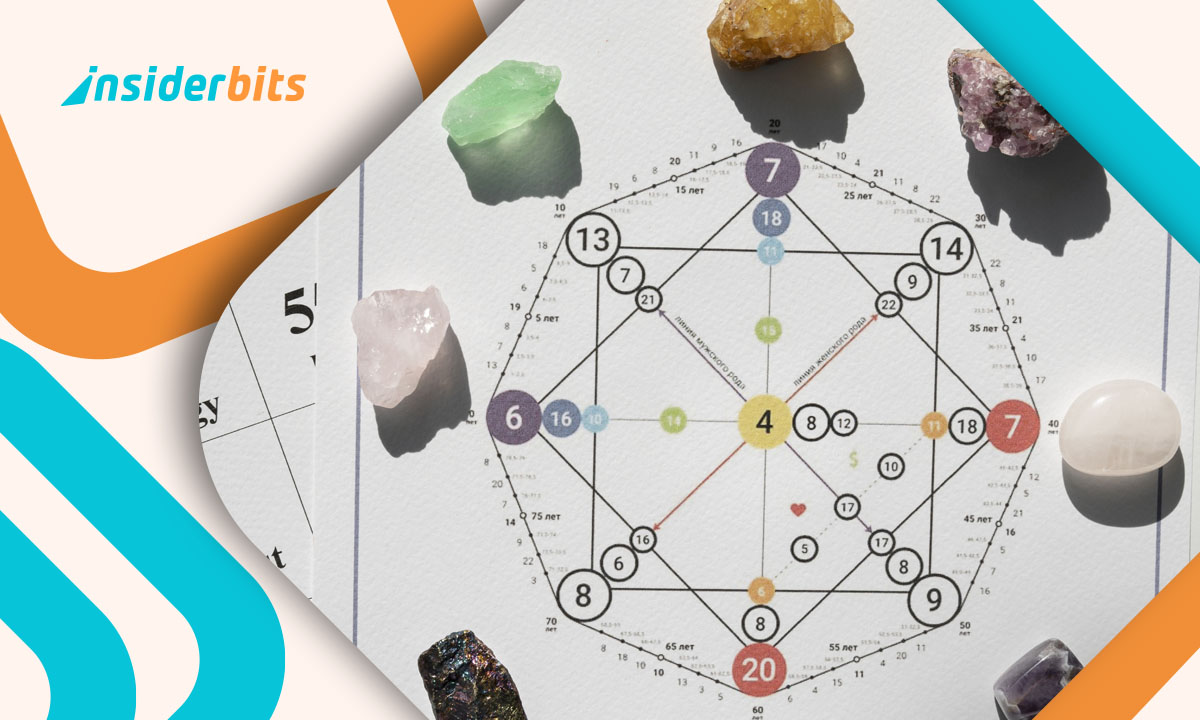Summer is no longer just about ice cream cones and beach days, so let’s get over the perspiration and face reality. When the weather app displays “extreme heat warning”, it’s not merely advising you to wear sunscreen. Your body is the depressing little casserole inside the outdoor space, which has essentially turned into a convection oven.
But before you resign yourself to spending July through September as a puddle of human goo, know this: surviving (and even thriving during) brutal heat waves comes down to smart preparation and the right tech tools. We’re about to turn you into a heat wave ninja—the kind who stays cool while everyone else melts into their flip-flops.
- Summer Essentials – Must-Have Apps for the Season
- Beat Summer Boredom: The Best Apps For Kids
- Summer reading: Discover new authors and genres with these reading apps
What an extreme heat warning means and how to act
When meteorologists issue an extreme heat warning, they’re not being dramatic—they’re basically saying “the atmosphere wants to kill you today”. These alerts trigger when:
- Daytime highs reach dangerous thresholds (usually 100°F+/38°C+ for multiple days);
- Nighttime lows don’t drop below 75°F/24°C, preventing recovery;
- Humidity levels make it feel significantly hotter than the actual temperature;
- Health risks spike for vulnerable populations like children and elderly.
The National Weather Service notes these conditions cause more deaths annually than hurricanes or floods.
But unlike those disasters, heat kills quietly—through dehydration, heat exhaustion, and organ failure.
App to get extreme heat warning alerts on your phone
Enter MyRadar—your personal heat wave early warning system. This app, available for Android and iOS, does way more than show cute cloud animations:
- Real-time alerts for extreme heat warnings in your exact location;
- Futurecast feature predicts dangerous conditions 24-48 hours out;
- Heat index calculations show how hot it really feels;
- UV monitoring warns when sun exposure becomes hazardous;
- Offline maps work even when cell service fails (because heat waves love knocking out power).
4.7/5
How to download and use the MyRadar app step-by-step
Getting set up takes less time than it takes ice cubes to melt in this weather:
- Download MyRadar from your app store (no complicated setup required);
- Enable location services for hyper-local alerts;
- Customize notifications to prioritize extreme heat warnings;
- Check the heat index before planning outdoor activities;
- Share your location with family so they can check conditions remotely.
The app’s “temperature trends” graph shows when the day will be most dangerous—plan errands around cooler morning/evening hours.

How to cool your home and stay hydrated
When that extreme heat warning flashes on your phone, your home transforms from a comfortable living space into a critical survival bunker.
In contrast to those doomsday preppers who have underground shelters, you can transform your space into a cool haven without breaking the bank by using clever techniques.
The ventilation game plan
Cross-ventilation isn’t just opening random windows—it’s a science:
- Nighttime purge: open windows on opposite sides of your home between 4-7AM when temperatures bottom out;
- Thermal curtains: invest in proper insulating window coverings (white reflects heat best);
- Strategic fans: place box fans in windows to push hot air out at night and pull cooler air in;
- Morning lockdown: seal up your home by 9AM before outside temperatures spike.
The US Department of Energy found these techniques can keep indoor temperatures 10-15°F cooler than outside during peak heat.
DIY cooling hacks that actually work
When your AC can’t keep up (or you don’t have one), get creative:
- Ice fan upgrade: Place a mixing bowl of ice water before a fan for better “AC” than just ice trays;
- Frozen sock trick: Fill a sock with rice, freeze it, and place at your feet while sleeping;
- Cooling pulse points: Keep ice packs or frozen spoons on wrists, neck, and temples;
- Cold floor sleeping: If you have tile floors, ditch the bed for a night (your inner kid will love it).
Hydration—beyond just drinking water
Staying properly hydrated during extreme heat means thinking beyond the water bottle:
- Electrolyte balance: for every 3 glasses of water, have 1 glass with electrolyte tablets or coconut water;
- Frozen fruit snacks: grapes, berries, and melon chunks make perfect hydrating treats;
- Avoid hydration saboteurs: alcohol, caffeine, and sugary drinks actually dehydrate you further;
- Pee check: your urine should look like pale lemonade—anything darker means trouble.
Heat-smart eating habits
Your digestive system is basically a furnace—here’s how to minimize the heat:
- Cold soups: gazpacho and cucumber soups provide nutrients without cooking heat;
- Frequent small snacks: nuts, yogurt, and chilled veggies keep energy up without overheating;
- Grill avoidance: that backyard BBQ will turn your kitchen into a sauna—opt for no-cook meals;
- Spicy food myth: contrary to popular belief, capsaicin actually raises body temperature.
Better Health Victoria’s research shows evaporative cooling (wetting clothes/skin) works best when humidity is below 60%. But remember, this only works until the water evaporates, so reapply often.
Just don’t soak yourself right before sun exposure, as water droplets focus UV rays like tiny magnifying glasses on your skin.
Emergency kits for heat waves
Your hurricane kit won’t cut it for extreme heat. Build a specialized survival kit with:
- Electrolyte packets to combat salt loss from sweating;
- Cooling towels that activate with water;
- Battery-powered fans (because blackouts love heat waves);
- Thermometer to monitor indoor temperatures;
- List of cooling centers in your area.
For vulnerable neighbors without AC, a simple check-in could be lifesaving. The Met Office notes most heat-related deaths occur in the first 48 hours of a heat wave before people adjust their behavior.
4.7/5
Stay smart, stay cool
Extreme heat warnings aren’t suggestions—they’re survival bulletins. With MyRadar’s alerts and these practical strategies, you can outsmart the mercury.
For more environmental monitoring tools, check out our guide to space weather apps.
And remember—the Weather Service’s heat safety page has crucial updates when temperatures spike. Now go forth and conquer summer like the heat-prepared boss you are.





